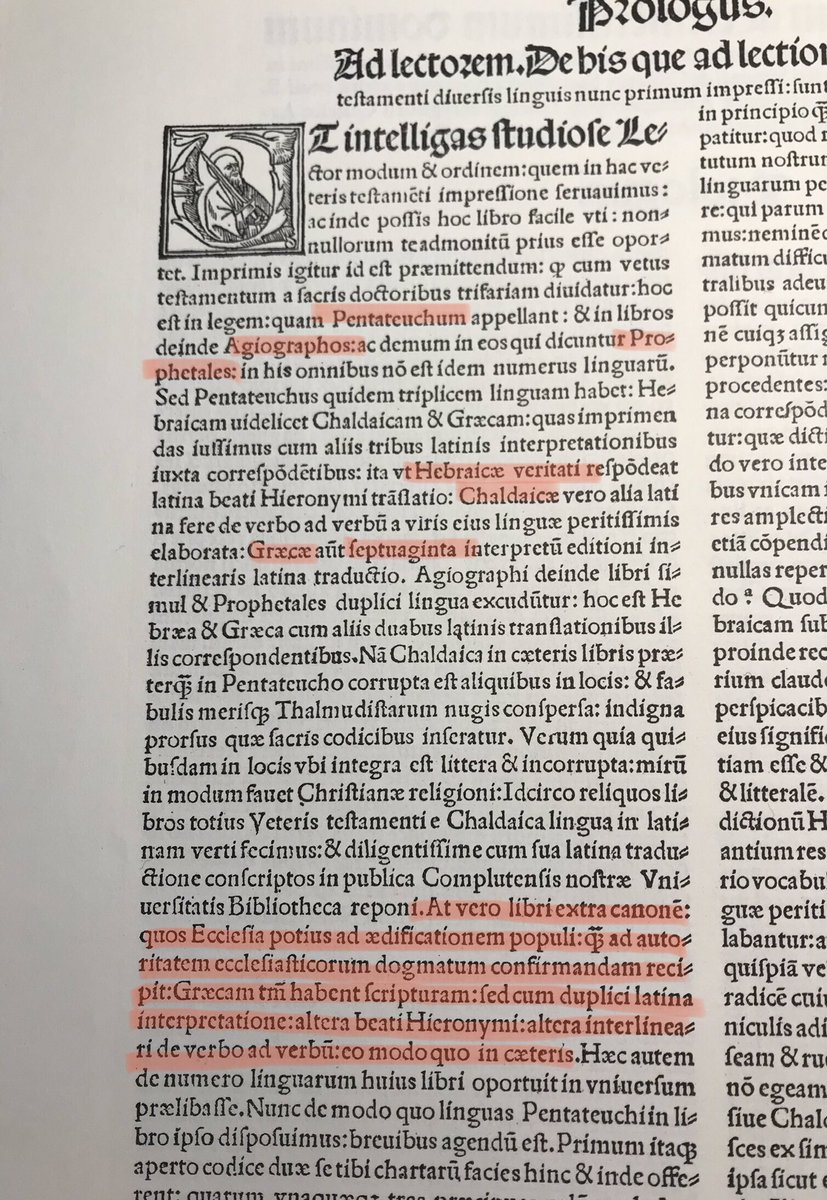1 It affirms #Jerome’s Hebrew Veritas or Truth of the Hebrews.
2 It borrows Jerome’s trifarium: Pentateuch, Hagiographa, and Prophets; three divisions in Heb Bib.

3 It explains the triple languages that its pages contain: Hebrew, Chaldean (Aramaic), & #Greek each w/Latin translation
4 Only the #Pentateuch will contain Chaldean because of the corrupt state of it in the other books
5 The Chaldean was prepared by experts in this language
6 The description of the Greek is twofold: for the books in the Hebrew, the Greek Edition of the Seventy/#Septuagint is used, while for books “outside of the canon” (extra conone), they have only Greek writing—not the Seventy—beside them.
Thus LXX is quite specific here.
7 The Latin translations are threefold as well: Jerome’s Vulgate paired with the Hebrew; A Latin translation of the Chaldean was prepared; the Latin translation of the Greek was word for word and presented in an interlinear fashion.
Overall the Complutensian Polyglot provides Jerome’s perspective on the matter of the biblical canon and even the texts one should use for biblical study. Its conclusions, drafted by Catholic Cardinals and editors, would seem to be out of step with Trent’s later rulings...
The 16th century must have been wild and crazy for anyone working in this area.


